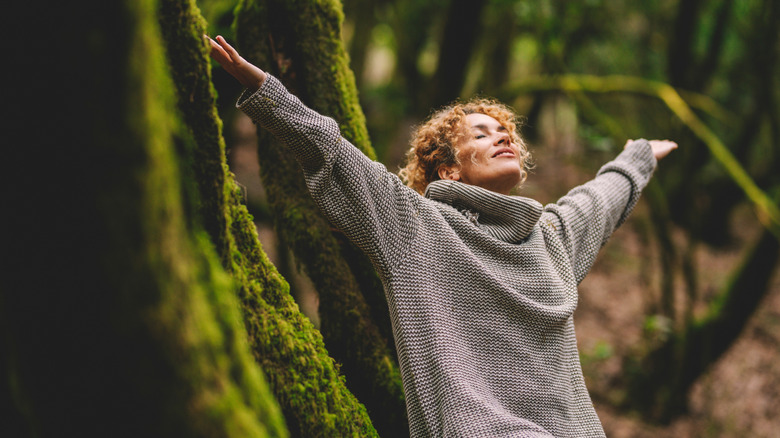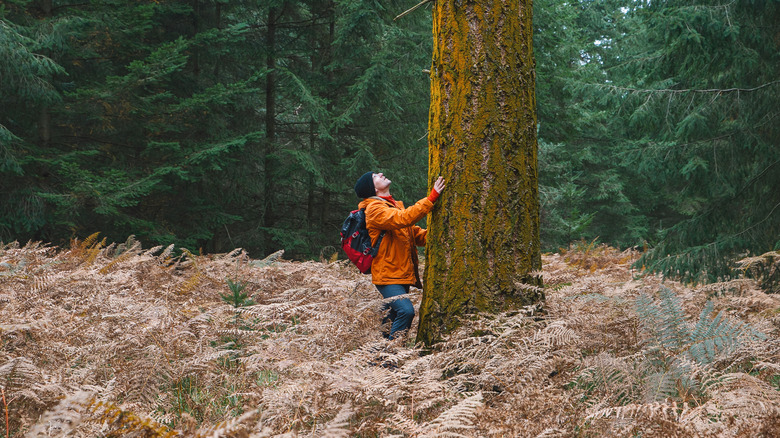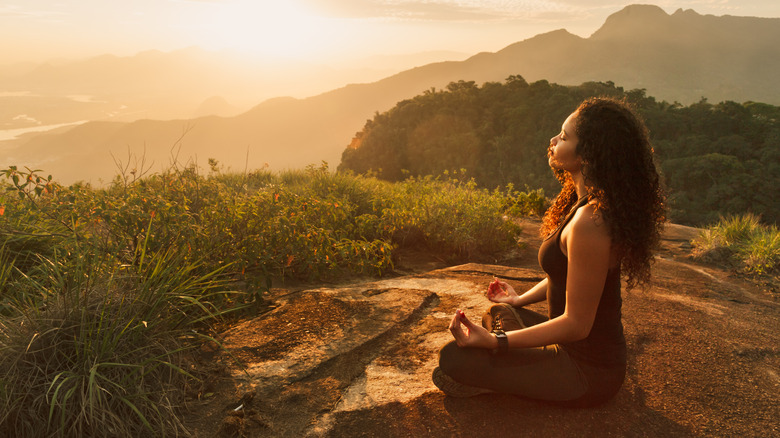This Soothing Travel Trend Is An Immersive Nature Experience That Can Boost Mental Health
In a fast-paced, tech-heavy world, we know that spending time in nature is a healthy habit, like eating carrots and flossing our teeth. Even if we like the woods, though, many of us struggle to carve our time to immerse ourselves in nature. We would love to stroll down a path and admire the foliage, just as we'd like to spend an hour reading a paperback novel or taking a piano lesson. That would be great, wouldn't it? We know just how many must-visit destinations around the world there are for avid hikers. Too bad most of us can't earn a salary by tromping over leaves. Maybe we'll try to get outside next weekend, or the one right after that.
It's easy for many of us to fall into this entropic cycle, but the stakes may be higher than we realize. Scientists and health care workers increasingly refer to Nature Deprivation Disorder, a condition that results from prolonged separation from natural spaces that has been linked to anxiety, depression, and behavioral issues. Spending all our time indoors — in vehicles, rec rooms, and cubicles — deprives our bodies of the vitamin D we absorb from sunlight. Meanwhile, endless scrolling on devices may adversely affect our mental health, and the "blue light" emitted by backlit screens may degrade our eyesight and cause sleep issues.
In short, strolling in the woods is considered beneficial to our health and wellbeing, and a growing number of people are turning this pastime into a serious practice: "forest bathing." More than just lazing in the backyard, forest bathing is a conscious effort to connect with nature. It doesn't take much knowledge or effort, just a state of mind.
What is forest bathing?
The phrase "forest bathing" can be traced to Japan in the 1980s, when urban office workers started experiencing "karoshi," or "death by overworking." Japan enjoyed a massive economic boom around this time, and major corporations thrived, but many workers struggled with long shifts, relentless pressure, and forced socializing with coworkers. Japanese society has long been famous for its work ethic, but the closed loop of office towers and high rises felt hopelessly far from hills and mountains. Japan is also the birthplace of Shintoism, an animist religion that reveres nature. The solution: Make time to escape the city and bond with Japan's ample forests.
Known in Japanese as "shinrin-yoku," forest bathing is now considered a popular form of preventative care –– and the concept has spread throughout the rest of the world. Researchers have taken increasing interest in the health benefits of forest bathing. For instance, regular visits to natural spaces appear to improve memory and other mental functions, and many participants report overall mood enhancements. This isn't just atmospheric: Trees are known to release an organic compound called phytoncides into the air, which can, theoretically, have a calming effect.
In many ways, this makes sense: More than half of modern humans now live in urban areas, and natural spaces are more difficult than ever to access. As recently as 1960, this figure was more like one-third, and the vast majority of people lived in rural areas in centuries past. The same way many travelers are considering a farm stay for their next getaway, more people are getting serious about just being outside.
How to forest bathe
For the record, the "bathing" part is figurative: There's no soap or swimsuit required. All you need for forest bathing is to enter a natural space for a period of time. Just a walk down a quiet path in a park could even do the trick, though there are many other ways to engage with your surroundings. Silence your devices, take deep breaths of fresh air, touch tree bark, run fingers through grass, strip off your footwear and submerge your feet in a brook or pond, the list goes on. Many people try to meditate, while others might practice yoga or Tai Chi. As long as you're embracing your surroundings and finding unique pleasure in this space, you're doing it right.
So what if you can't find an actual forest? What if you live in a desert or prairie, where large bunches of trees are hard to come by? Not to worry: A synonymous term is "nature therapy," a catchall that may capture the concept's spirit better than "forest bathing." This can be done anywhere quiet and natural. You can absolutely bring company, although many people prefer solitude when the bathe in the forest. If you do decide to forest bathe solo, here are 12 tips to help you feel safe while hiking alone.


